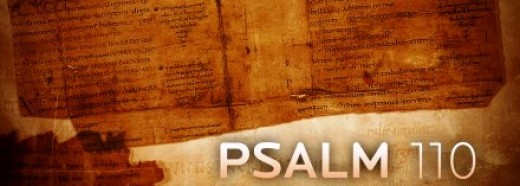The Evidence of Archaeology | Robert J. Morgan
The Evidence of Archaeology
In addition to the archaeological discoveries mentioned in the last chapter, there are thousands of other artifacts, inscriptions, sites, and excavations that help confirm the historical reliability of the Bible. Due to space limitations, we will discuss only ten of them.
The Silver Scrolls (Amulets)
The Dead Sea Scrolls pushed back the date for the oldest extant copies of Old Testament Scripture from a.d. 980 to about 150 b.c., but a more recent discovery has now pushed the date back even further. In 1979 archaeologists in the Hinnom Valley of Jerusalem discovered nine burial caves that had been carved in the rock over 2,600 years ago, during the days when the descendants of David still sat on Israel’s throne. Inside these tombs were two silver scrolls, rolled up and very tiny, designed to be worn on a necklace. They were caked with dirt and so fragile that no one dared unroll them.
Finally, the Israel Museum rinsed the scrolls in a solution of salt and acid to remove the corrosion and sprayed them with a film-like substance. Researchers started unrolling the tiny scrolls millimeter by millimeter. Faint scratches on one of them were recognized as coming from Scripture, from Numbers 6: “The Lord bless you and keep you; the Lord make his face shine upon you and be gracious to you; the Lord turn his face toward you and give you peace” (vv. 24–26). This is the oldest fragment of Scripture known to man, dating back 2,600 years.
Hezekiah’s Tunnel
Modern biblical archaeology had its beginnings with a man named Edward Robinson, born in Connecticut in 1793. His father was a Congregationalist minister, and Edward grew up studying the Bible. He excelled in theological studies in America and Europe and in 1838 visited Palestine in the company of a missionary named Eli Smith. Robinson and Smith walked across the Holy Land with a Bible in one hand and a compass in the other, searching for the ruins and sites of ancient towns.
Among Robinson’s discoveries—perhaps the first great archaeological find in modern history—was one that confirmed 2 Kings 20:20: “As for the other events of Hezekiah’s reign, all his achievements and how he made the pool and the tunnel by which he brought water into the city, are they not written in the book of the annals of the kings of Judah?”
As Robinson poked about Jerusalem, he went to the Pool of Siloam. The water level was lower than usual, and Robinson took off his shoes and examined the pool. He discovered an entrance to a tunnel and followed the passage about eight hundred feet under the city. He had discovered the very water system designed by King Hezekiah and referred to in 2 Kings 20:20. Robinson eventually made it all the way through the subterranean channel, sometimes having to lie flat and push himself along with his elbows. By studying the chisel marks, he determined that men had started on both ends, tunneling toward each other and meeting in the middle.
A few years later, a Jewish school child playing in the Pool of Siloam felt markings of some kind on the walls of the pool. Archaeologists lowered the water level again and found this inscription, dating from the days of Hezekiah himself, inscribed on the stone in purest biblical Hebrew: “While there were still three cubits to be cut through, there was heard the voice of a man calling to his fellow, for there was an overlap in the rock on the right and on the left. And when the tunnel was driven through, the quarrymen hewed the rock, each man toward his fellow, ax against ax; and the water flowed from the spring toward the reservoir for 1,200 cubits, and the height of the rock above the heads of the quarrymen was 100 cubits.”1
This is generally considered the most famous inscription ever found in Jerusalem. Because it was discovered in the nineteenth century while Jerusalem was under Turkish rule, the inscription was cut from the tunnel and taken to Istanbul where it now resides in the Istanbul Archaeological Museum.
The House of David
Amazingly, many scholars of the nineteenth and twentieth centuries doubted the existence of King David. Their objections centered on two things. First, the stories attributed to him are fantastic—maintaining that he was a young shepherd boy who killed a giant with his slingshot and later established a royal dynasty. Second, there had never been historical confirmation outside the Bible of a king named David.
But in 1993 a discovery among the ruins of the northern Israeli town of Dan changed that. We now have a monument from antiquity inscribed with references to the “House of David.” The inscription refers to the fact that the king of the house of David was defeated by the king of Damascus in a battle like the one in 1 Kings 15:20: “Ben-Hadad [King of Syria] agreed with King Asa and sent the commanders of his forces against the towns of Israel. He conquered … Dan.” This is the first reference to the personage of David outside the Bible, but it confirms his existence (and confounds the critics).
Hot on the heels of that discovery came a new edition of the text of the Moabite Stone by Andre Lemaire. The Moabite Stone (the Mesha Stela) was uncovered in 1868 and dates to just after the death of King Ahab. It gives the Moabite account of its wars with Israel. The content of the Moabite Stone describes the king of Moab, Mesha, who led his people to break away from bondage to Israel. Omri, a king of Israel, is mentioned by name, thus giving extra-biblical evidence to his existence. The Moabite rebellion is mentioned in 2 Kings 1:1 and 3:5. Some of the text is hard to translate, for the stone was broken in unfortunate places. But Lemaire, professor at the Institute of Semitic Studies of the College de France, has prepared a reconstruction of its text. He published his findings in Biblical Archaeology Review, and, comparing his discovery with the inscription from Dan, he said:
The recent discovery at Tel Dan of a fragment of a stela containing a reference to the “House of David” (that is, the dynasty of David) is indeed sensational. The inscription easily establishes the importance of Israel and Judah on the international scene at this time—no doubt to the chagrin of those modern scholars who maintain that nothing in the Bible before the Babylonian exile can lay claim to any historical accuracy. This fragment from the Tel Dan stela has been hailed because it contains the name “David,” supposedly for the first time in ancient Semitic epigraphy. But this claim is not true—or at least not quite true; I believe these same words—the “House of David”—appear on the famous Moabite inscription known as the Mesha stela, also from the 9th century (b.c.). While for most scholars the reference to the “House of David” on the Tel Dan fragment was quite unexpected, I must confess I was not surprised at all. I have been working on the Mesha stela for the past seven years, and I am now preparing a detailed edition of the text. Nearly two years before the discovery of the Tel Dan fragment, I concluded that the Mesha stela contains a reference to the “house of David.” Now the Tel Dan fragment tends to support this conclusion.2
Caiaphas
A similar story involves Caiaphas, Israel’s high priest during the time of Jesus. Critics charged that no such man ever existed. His name had never been found in ancient documentation apart from the Bible. But in 1990 a burial cave excavated in Jerusalem contained a tomb marked with the family name of Caiaphas. Coins in the tombs proved they were from the first part of the first century. U. S. News and World Report began their cover story on biblical archaeology by saying:
From the fertile valley of the Euphrates to the desolate sands of the Sinai, it is a land of ancient civilizations whose material history lies buried in the rocky hills and deserts but whose stories of patriarchs and prophets have survived the centuries in sacred Scriptures. Now the sands of the Middle East are yielding secrets hidden for thousands of years that shed surprising new light on the historical veracity of those sacred writings. In this decade alone, archaeologists in Israel have unearthed amazing artifacts pertaining to two important figures from the Bible: a 9th century b.c. stone inscription bearing the name of David, the ancient Israelite warrior-king who killed the giant Goliath, and a first century a.d. tomb believed to be that of Caiaphas, the Jerusalem high priest who presided over the trial of Jesus. In both cases, it was the first archaeological evidence ever discovered suggesting that the two existed beyond the pages of the Bible. “These finds are tremendously important finds,” says James K. Hoffmeier, chairman of archaeology and biblical studies at Wheaton College in Illinois. “They will certainly cause anxiety for the skeptics.”3
The Patriarchs
One of the frustrating areas of archaeological studies for biblical scholars has been the period of the patriarchs. Abraham, Isaac, and Jacob lived in tents as desert nomads. They left few archaeological traces. For years skeptics have questioned the historicity of the book of Genesis and the biblical story of Israel’s beginnings. But consider these factors:
- The ruins of many of the cities of Genesis have been found, and those ruins are consistent with the biblical story. For example, we have excavations at Ur, city of Abraham, showing it to be a huge, thriving city with an advanced civilization during the days of Abraham. The citizens lived in comfortable homes, and the children attended school to learn reading, writing, arithmetic, and religion. The cities of Shechem, Ai, Bethel, and Hebron have also been found. The book of Genesis says that when Abraham left Ur, he traveled toward the Promised Land, stopping in the city of Haran in upper Mesopotamia where his father died. Excavations now underway by archaeologists from the University of Chicago have shown Haran to be a thriving city during the days of the patriarchs. Shortly after, it was abandoned and remained uninhabited until the seventh century b.c. One archaeologist said, “It’s highly improbable that someone inventing the story later would have chosen Haran as a key location when the town hadn’t existed for hundreds of years.”4
- The very name Abraham has been discovered in ancient clay tablets dating from the sixteenth century b.c.
- In the ruins of ancient Nuzi (near modern Baghdad), a library of clay tablets was uncovered that demonstrates many of the customs we read about in the patriarchal stories. For example, in Genesis 15 a childless Abraham laments that his servant Eliezer would inherit all his property. The Nuzi tablets shed light on this passage. In those days if a couple was childless, a trusted friend or servant would become that couple’s heir, almost like an adopted son. But if the couple later conceived and gave birth to a son, the agreement with the servant was nullified, and the natural son became the heir. There are also several incidents described in the Nuzi tablets in which a barren woman asked her husband to take her slave as a sort of surrogate wife to produce an heir, much as Abraham did with Hagar.
The critics who asserted that the Genesis stories were late-dated fables have had to abandon many of their beliefs because it is not reasonable that so much authentic local color and customs could be injected into stories written centuries after the fact. Tablets at Nuzi (as well as those found at Ebla and Mari) confirm the cultural climate and customs of the Genesis accounts.
The Exodus
Another frustrating area for evangelical archaeologists has been the Exodus, for most scholars have consistently asserted that archaeological evidence for the Exodus of Israel from Egypt is lacking. After all, nomads wandering through the desert do not leave many ruins.
But recently some skeptics have been questioning their assumptions. For example, Charles Krahmalkov, Professor of Ancient Near East Languages at the University of Michigan, had always believed that the Exodus account was a fabrication. But while studying the inscriptions on the Temple of Amon at Karnak, dating from the reign of Thutmose III (c. 1504–1450 b.c.), he was astonished to find a listing of cities that corresponds remarkably to the cities listed in Numbers 33. Based on that and other evidence, Krahmalkov has changed his mind.5 He said, “In short, the Biblical story of the invasion of Transjordan that set the stage for the conquest of all Palestine is told against a background that is historically accurate.” He added, “I am not a conservative believer. I am a scholar of the old school who believes we try to let our data speak to us. We don’t force it into a preconceived idea. I find myself astonished at the results. [The ancient historians of Israel] preserved in the Bible true historical sources of a very early age. They cannot possibly have invented them.”6
The Conquest of Hazor
Joshua 11 says that the king of Hazor mobilized the northern kings to fight against the Israelites during the conquest of the Promised Land. Verses 10 and 11 say, “At that time Joshua turned back and captured Hazor and put its king to the sword. (Hazor had been the head of all these kingdoms.) … he burned up Hazor itself.” The next book, Judges, says that Hazor, having rebuilt itself to an extent, was again destroyed, this time by Deborah and Barak (Judges 4).
In 1955 Israeli archaeologist Yigael Yadin was excavating this bottle-shaped site ten miles north of the Sea of Galilee. He found a Canaanite worship site that had been deliberately defiled. He found a tiny statue, a false god whose head had been cut off. Yadin immediately thought of Deuteronomy 12, the passage in which the Israelites were instructed to defile and destroy pagan worship sites. Further studies showed that Hazor had been a teeming city, population of about 20,000, that had been suddenly destroyed by fire during the days of Joshua and the Judges. Yadin’s discovery corresponded exactly to the Old Testament accounts.
The Clay Seal of Gemariah
Ever heard of Gemariah? He was an obscure figure in Scripture who lived in Jerusalem during the days of Jeremiah, an official in Solomon’s temple with his office on an upper level of the temple itself. According to Jeremiah 36, the prophet Jeremiah wrote a sermon condemning the corruption of the national leaders. His servant read the scroll to the people in the office chamber of Gemariah. When King Jehoiakim heard of it, he sent for the scroll and hacked it to pieces. Among those who warned the king of his foolishness and begged him not to destroy the scroll was Gemariah. Shortly afterward, the Babylonians burned down the city of Jerusalem.
In 1980 the Jewish archaeologist Yagil Shiloh, excavating in Jerusalem near the temple mount, found a room containing fifty-one clay seals (bullae) that had originally been affixed to important documents. These seals bore the names of various officials during the days of the monarchy. Most remarkable of all of them was one bearing the name of a scribe named Gemariah, the son of Shaphan, who was employed in the royal court of King Jehoiakim toward the end of the seventh century b.c.—the very Gemariah mentioned in Jeremiah 36. The condition of the seal told its story. It had originally been affixed to a papyrus document, but a terrible fire had burned out of control, destroying the document and baking the clay seal as hard as brick, thus preserving it.
Capernaum
Of all the ruins and sites in the Holy Land, perhaps the most interesting is Capernaum, where Jesus Himself lived. When Christ left Nazareth, he settled down in this lakeside village, home of Peter and Andrew. In the centuries that followed, the village disappeared from notice, and scholars had no idea where it had been. But archaeologists have been excavating Capernaum for the past one hundred years, and we have a village along the Roman Road, the Via Maris, with lined streets, the foundations of houses and shops, and the ruins of a magnificent synagogue.
Of particular interest is a house, evidently the home of a fisherman, which became a meeting place for early Christians and was later expanded into a church. Here archaeology and tradition merge to give us reasonable certainty that this is the very house of Peter himself, the house in which Jesus stayed, the house in which the invalid was lowered through the roof. Archaeologists have confirmed that this house was a single-story dwelling dating from the first century. Fishhooks were even found among the ruins. But toward the middle of the first century, it started receiving special treatment, becoming a house-church and then being enlarged as a gathering place for Christians.
Nearby are the ruins of a synagogue. Excavations have shown it to have been built on a first-century foundation, the foundation of the very synagogue commissioned, built, and paid for by the Roman centurion of Luke 7. This is the foundation of the same synagogue in which Jesus began His ministry. Visitors can go there today, walk down the street from Peter’s house to the synagogue, and stand at the very spot where Jesus stood and taught the people near Galilee’s shore.
The “Jesus Boat”
Almost as interesting as Capernaum is the ancient boat buried in the mud, discovered in 1986. A terrific drought had befallen Galilee that year, and the water level of the Sea of Galilee dropped dramatically. Local inhabitants noticed the oval outline of a boat buried deep in the mud, and Israeli archaeologists immediately began excavating it. The boat dates from the time of Jesus. Today the fragile remains of the “Jesus Boat” are housed in a museum and submerged in preserving solutions. The vessel measures twenty-six feet long and seven feet wide and would have carried about fifteen men. It could be, in fact, the very boat Jesus used when sailing across the Sea of Galilee. It was likely sailing the Sea of Galilee when Jesus was there, exactly as described in the Gospels.
Summary
Admittedly, the jury of archaeological evidence is still out, especially as it relates to the world of the patriarchs, the nature of the Exodus under Moses, and the extent of the conquest under Joshua. But the eminent American archaeologist William Dever said that a century and a half of exploration “has for all time demolished the notion that the Bible is pure mythology. The Bible is about real, flesh-and-blood people, in a particular time and place, whose actual historical experience led them irrevocably to a vision of the human condition and promise that transcended anything yet conceived in antiquity.”7
Nelson Glueck, the Jewish archaeologist, stated it even more plainly: “It may be stated categorically that no archaeological discovery has ever controverted a biblical reference.”8 On the contrary, archaeology has debunked the charges of one skeptic after another and has confirmed to a large extent the historical reliability of the Bible.
The critics, it seems, keep trying to bury the Bible. But the archaeologists bury the critics and keep digging the Bible back up.
For Further Discussion
- Can archaeology “prove” the Bible? If not, what role can a study of archaeology play in the believer’s faith and knowledge of Scripture?
- Is making a pilgrimage to the Holy Land worth the time and money?
For Application
- Perhaps a member of your group has visited the Middle East or even participated in an archaeological dig. Ask him or her to share impressions. Locate a travel video of Israel and view it together.
- Visit your church or school library and examine copies of the magazine Biblical Archaeological Review. You might not agree with every article or interpretation in the magazine, but become familiar with the general field of archaeology and study the pictures carefully. Share some of the best pictures with the group.
- Consider going on an archaeological dig. You will have to pay your own way, and the work is hard. But the costs are less than most other overseas trips, and the experience is invaluable. Biblical Archaeological Review provides a listing of digs each year.
1 Lost Civilizations: The Holy Land, ed. Time-Life Books (Alexandria, Va.: Time-Life Books, 1992), 24.
2 Andre Lemaire, “ ‘House of David’ Restored in Moabite Inscription,” Biblical Archaeology Review, May/June 1994, 31-32.
3 Jeffery L. Sheler, “The Mysteries of the Bible,” U.S. News and World Report, April 17, 1995, 60-61. Also see the article “ ‘David’ Found at Dan,” in Biblical Archaeology Review, March/April 1994.
4 Ibid., 63.
5 Charles R. Krahmalkov, “Exodus Itinerary Confirmed by Egyptian Evidence,” Biblical Archaeology Review, September/October 1994, 58.
6 Gordon Grovier, “New Evidence for Israeli Exodus,” Christianity Today, April 3, 1995, 87.
7 Lost Civilizations: The Holy Land, ed. Time-Life Books, 37.
8 Quoted in Josh McDowell, Evidence That Demands a Verdict (San Bernardino: Here’s Life Publishers, 1986), 65.



